
Quantitative InfraRed Thermography Journal
Scope & Guideline
Elevating Standards in Quantitative Thermography
Introduction
Aims and Scopes
- Medical Diagnostics:
The journal emphasizes the application of infrared thermography in medical diagnostics, particularly in detecting and monitoring conditions such as cancer, diabetes, and other health-related issues. It explores innovative methodologies for analyzing thermal images to improve diagnostic accuracy. - Non-Destructive Testing (NDT):
A core focus of the journal is on non-destructive testing methods utilizing infrared thermography to evaluate the integrity and quality of materials and structures. This includes applications in aerospace, civil engineering, and manufacturing. - Thermal Imaging Techniques and Algorithms:
The journal publishes research on advanced thermal imaging techniques, including deep learning algorithms, image processing methods, and novel thermographic systems, aimed at enhancing the quality and reliability of thermal imaging data. - Material Characterization and Performance Evaluation:
Research related to the characterization of materials using infrared thermography is a key area. This includes studies on heat transfer properties, defect detection, and performance evaluations of various materials under different conditions. - Environmental and Agricultural Applications:
The journal also explores the use of infrared thermography in environmental monitoring and agricultural applications, such as assessing plant health, monitoring water stress, and studying thermal properties of various environmental materials.
Trending and Emerging
- Deep Learning Applications:
There is a significant increase in studies applying deep learning techniques to analyze thermal images. This trend highlights the growing importance of AI in enhancing diagnostic accuracy and automation in image processing. - Integration of UAV Technology:
The utilization of unmanned aerial vehicles (UAVs) for infrared thermography applications is on the rise. This trend signifies advancements in remote sensing and monitoring capabilities, particularly in building performance evaluations and environmental assessments. - Healthcare Innovations:
Emerging themes in healthcare applications, including the use of thermography for monitoring chronic conditions and surgical outcomes, indicate a growing interest in integrating thermal imaging into clinical practices. - Multimodal and Hybrid Approaches:
Research is increasingly focusing on combining infrared thermography with other imaging modalities and techniques, such as visible light imaging and advanced data processing methods, to enhance defect detection and analysis. - Sustainability and Environmental Monitoring:
There is an increasing emphasis on using infrared thermography for sustainability-related applications, including energy efficiency assessments and environmental impact studies, reflecting a broader societal focus on climate change and resource management.
Declining or Waning
- Traditional Thermography Techniques:
There has been a noticeable decline in publications focusing on traditional infrared thermography techniques without integration of modern computational methods. As the field increasingly embraces advanced algorithms and machine learning, conventional methods are becoming less emphasized. - Basic Theoretical Studies:
The journal has seen fewer studies concentrating solely on theoretical aspects of infrared thermography. As practical applications and quantitative analyses gain traction, purely theoretical discussions appear to be waning. - Manual Analysis Methods:
Research involving manual or semi-automated analysis of thermal images is becoming less common. The trend is shifting towards fully automated systems driven by deep learning and artificial intelligence, leading to a decline in interest in manual methodologies. - Generalized Applications Across Industries:
There is a decreasing focus on generalized applications of infrared thermography across multiple industries without specific case studies or innovations. Researchers are now more inclined to explore niche applications with detailed methodologies and results.
Similar Journals

Methods and Applications in Fluorescence
Shaping Tomorrow's Fluorescence TechnologiesMethods and Applications in Fluorescence is a premier academic journal published by IOP Publishing Ltd, dedicated to the interdisciplinary study of fluorescence techniques and their applications across various scientific fields. With a distinguished impact factor and categorized in the Q2 quartile for 2023 in multiple domains including Atomic and Molecular Physics, Optics, Instrumentation, and Materials Science, this journal plays a crucial role in advancing research and innovation in the field. The journal's scope encompasses a rich array of methodologies and applied studies, fostering collaboration between researchers and professionals aiming to push the boundaries of fluorescence sciences. With its commitment to rigorous peer review and open dissemination of knowledge, Methods and Applications in Fluorescence is essential for anyone involved in fluorescence-related research or applications, offering insightful contributions that drive the field forward. The journal is accessible to academics from around the globe, ensuring dissemination of valuable findings and methodologies from 2013 to 2024 and beyond.
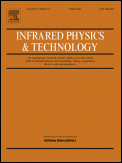
INFRARED PHYSICS & TECHNOLOGY
Driving Multi-disciplinary Collaboration in Infrared ScienceINFRARED PHYSICS & TECHNOLOGY, published by Elsevier, stands at the forefront of research in the fields of atomic and molecular physics, materials science, and condensed matter physics. With an impressive impact factor reflected in its Q2 quartile ranking across multiple categories, this journal serves as a key platform for disseminating high-quality peer-reviewed articles that advance understanding of infrared phenomena and their applications. As an essential resource from 1994 to 2024, it contributes significantly to the ongoing dialogue within the scientific community, providing researchers, professionals, and students with cutting-edge insights into electronic, optical, and magnetic materials. Although not an open access journal, its articles are widely disseminated and recounted in major databases, ensuring its pivotal role in the advancement of both theoretical and applied physics. Located in the vibrant academic hub of Amsterdam, the journal encourages innovative research that drives multi-disciplinary studies and fosters collaboration among scientists globally.

Additive Manufacturing Letters
Connecting Researchers to the Frontiers of Manufacturing InnovationAdditive Manufacturing Letters is a pioneering journal dedicated to the rapidly evolving field of additive manufacturing, offering an innovative platform for researchers, practitioners, and students interested in the latest advancements and technologies in this domain. Published by ELSEVIER in the Netherlands, this Open Access journal has been making significant strides since its inception in 2021, allowing for unrestricted access to its valuable content. As of 2023, it has achieved a commendable Q1 ranking in multiple categories including Engineering (miscellaneous), Industrial and Manufacturing Engineering, Materials Science (miscellaneous), and Mechanics of Materials, indicating its influential presence in the academic community. With a focus on high-quality research, Additive Manufacturing Letters fosters dialogue and collaboration among scholars, promoting cutting-edge research that aligns with the needs of the industry. Positioned at the intersection of engineering and materials science, this journal aims to enhance knowledge dissemination and support innovation in additive manufacturing methodologies and applications, making it an essential resource for anyone invested in advancing this field.
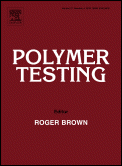
POLYMER TESTING
Transforming Insights into Polymer ExcellencePOLYMER TESTING is an esteemed academic journal published by Elsevier Science Ltd, focusing on advancements in the field of polymers and their applications. With a high impact factor and category quartiles reflecting its influence, it ranks in the Q1 quartile in both Organic Chemistry and Polymers and Plastics, indicating its crucial role in shaping research in these disciplines. The journal has been open access since 2021, ensuring that cutting-edge research is readily available to researchers, practitioners, and students alike. Covering the convergence of foundational and innovative studies from 1980 and continuing through 2024, POLYMER TESTING appeals to a diverse audience, from materials scientists to chemical engineers, providing a platform for high-quality peer-reviewed articles that advance our understanding of polymer behavior, performance, and applications. If you are looking to stay abreast of the latest trends and breakthroughs in polymer science, POLYMER TESTING is your go-to resource.
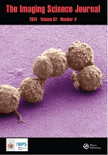
IMAGING SCIENCE JOURNAL
Innovating Insights in Computer Vision and MediaImaging Science Journal, published by Taylor & Francis Ltd, serves as a vital resource for researchers and professionals in the fields of computer vision, pattern recognition, and media technology. With an ISSN of 1368-2199 and an E-ISSN of 1743-131X, this journal has been fostering scholarly dialogue since its inception in 1997, with a converged content offering extending through 2024. Its categorization in Quartile 4 in Computer Vision and Pattern Recognition and Quartile 3 in Media Technology highlights its relevance and contributions to emerging trends in these domains. Although it ranks 36th in the Engineering - Media Technology category and 96th in Computer Science - Computer Vision and Pattern Recognition, its innovative research and insights continue to attract the attention of scholars dedicated to advancing knowledge at the intersection of imaging technologies. Offering versatile access options, this journal is essential for students, researchers, and professionals aiming to stay informed and engaged in the rapidly evolving landscape of imaging science.

Journal of Measurements in Engineering
Bridging Theory and Application in Measurement ScienceJournal of Measurements in Engineering is a pioneering open access journal dedicated to the crucial intersection of engineering and measurement technologies, published by JVE INT LTD in Lithuania. Since its transition to open access in 2018, the journal has significantly contributed to the field by providing a platform for disseminating innovative research findings and advances. With a focus on instrumentation, materials science, and mechanical engineering, it has established itself as a valuable resource for researchers, professionals, and students alike, offering insights that bridge theoretical concepts with practical applications. While currently holding a Q4 ranking in Instrumentation and Q3 ranks in both Materials Science (miscellaneous) and Mechanical Engineering, the journal encourages submissions that challenge existing paradigms and extend the boundaries of conventional measurements. As part of its commitment to fostering open scholarly communication, the journal accepts contributions reflecting a wide range of measurement methodologies and engineering applications up to the year 2024. By engaging with a global audience of practitioners and academics, the Journal of Measurements in Engineering underscores the vitality of precise measurement techniques in advancing engineering disciplines.
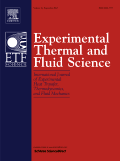
EXPERIMENTAL THERMAL AND FLUID SCIENCE
Shaping the landscape of applied sciences through experimental knowledge.EXPERIMENTAL THERMAL AND FLUID SCIENCE is a prestigious academic journal published by Elsevier Science Inc, dedicated to advancing the fields of thermal and fluid sciences. With a strong focus on innovative experimental research, it plays a crucial role in disseminating new knowledge and techniques across multiple domains, including Aerospace Engineering, Chemical Engineering, Fluid Flow and Transfer Processes, Mechanical Engineering, and Nuclear Engineering. Holding a notable impact factor and ranking in the Q1 quartile across these categories since 2023, the journal is recognized for its high-quality contributions, which appeal to a diverse audience of researchers, industry professionals, and students alike. Additionally, with dedicated coverage from its inception in 1988 to projections extending through 2025, EXPERIMENTAL THERMAL AND FLUID SCIENCE provides a vital platform for sharing advancements in experimental techniques and findings that shape the future of engineering and applied sciences.

RUSSIAN JOURNAL OF NONDESTRUCTIVE TESTING
Enhancing Safety and Quality Through Innovative Testing ApproachesRUSSIAN JOURNAL OF NONDESTRUCTIVE TESTING, published by PLEIADES PUBLISHING INC, is a respected academic journal that has been contributing significantly to the fields of Condensed Matter Physics, Materials Science, Mechanical Engineering, and Mechanics of Materials since its inception in 1996. With a concentrated focus on the latest advancements in nondestructive testing techniques, it serves as a vital resource for researchers, engineers, and practitioners seeking to improve material integrity and safety across various applications. Despite its classification in the Q3 quartile categories, the journal continues to foster scholarly dialogue and innovation in non-destructive research methodologies. Although it does not currently offer open access, the journal remains committed to disseminating high-quality research that influences both theoretical and practical landscapes. With an emphasis on quality, the journal seeks to connect academics and industry experts alike, thus enhancing the relevance and application of nondestructive testing in real-world contexts.
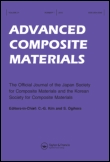
ADVANCED COMPOSITE MATERIALS
Unveiling Cutting-Edge Developments in Material ScienceADVANCED COMPOSITE MATERIALS, published by Taylor & Francis Ltd, is a leading peer-reviewed journal in the field of materials science, specifically focusing on the innovative development and applications of composite materials. With an ISSN of 0924-3046 and E-ISSN 1568-5519, this journal serves as a vital resource for researchers and professionals worldwide, examining cutting-edge advancements and methodologies in composites, ceramics, and mechanical engineering. Having secured a solid standing in the academic community, it boasts impressive Scopus rankings, such as #185 in Mechanical Engineering with a 72nd percentile and #46 in Ceramics and Composites, emphasizing its relevance and rigor. Although not an open-access publication, its insights are invaluable for those looking to explore, contribute to, and stay abreast of the latest breakthroughs in the field from 1991 through 2024. By targeting critical areas within mechanics and material sciences, the journal continues to foster innovation and scholarly discussion, making it an essential venue for specialists striving to advance the capabilities and applications of composite materials.

Acta Mechanica et Automatica
Fostering Collaboration in Mechanical and Control SystemsActa Mechanica et Automatica is a leading open-access journal published by SCIENDO, dedicated to the dynamic fields of Mechanical Engineering and Control and Systems Engineering. Since its inception in 2012, this journal has provided a vital platform for researchers and professionals to disseminate innovative findings and advances within these disciplines, boasting a convergence of years up to 2024. Based in Warsaw, Poland, the journal has embraced open access since 2013, ensuring broad dissemination of knowledge for the academic community globally. With a current Scopus ranking placing it in the 25th to 31st percentile among its peers, it plays an essential role in fostering scholarly communication and collaboration. The objectives of Acta Mechanica et Automatica include promoting original research, facilitating dialogue between disciplines, and enhancing the understanding of complex mechanical and control systems. This journal is invaluable for researchers looking to explore cutting-edge methodologies, theories, and applications in engineering.